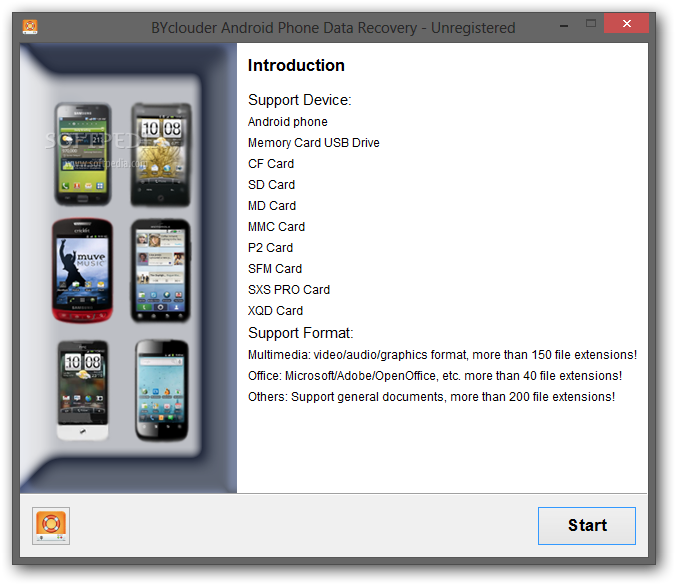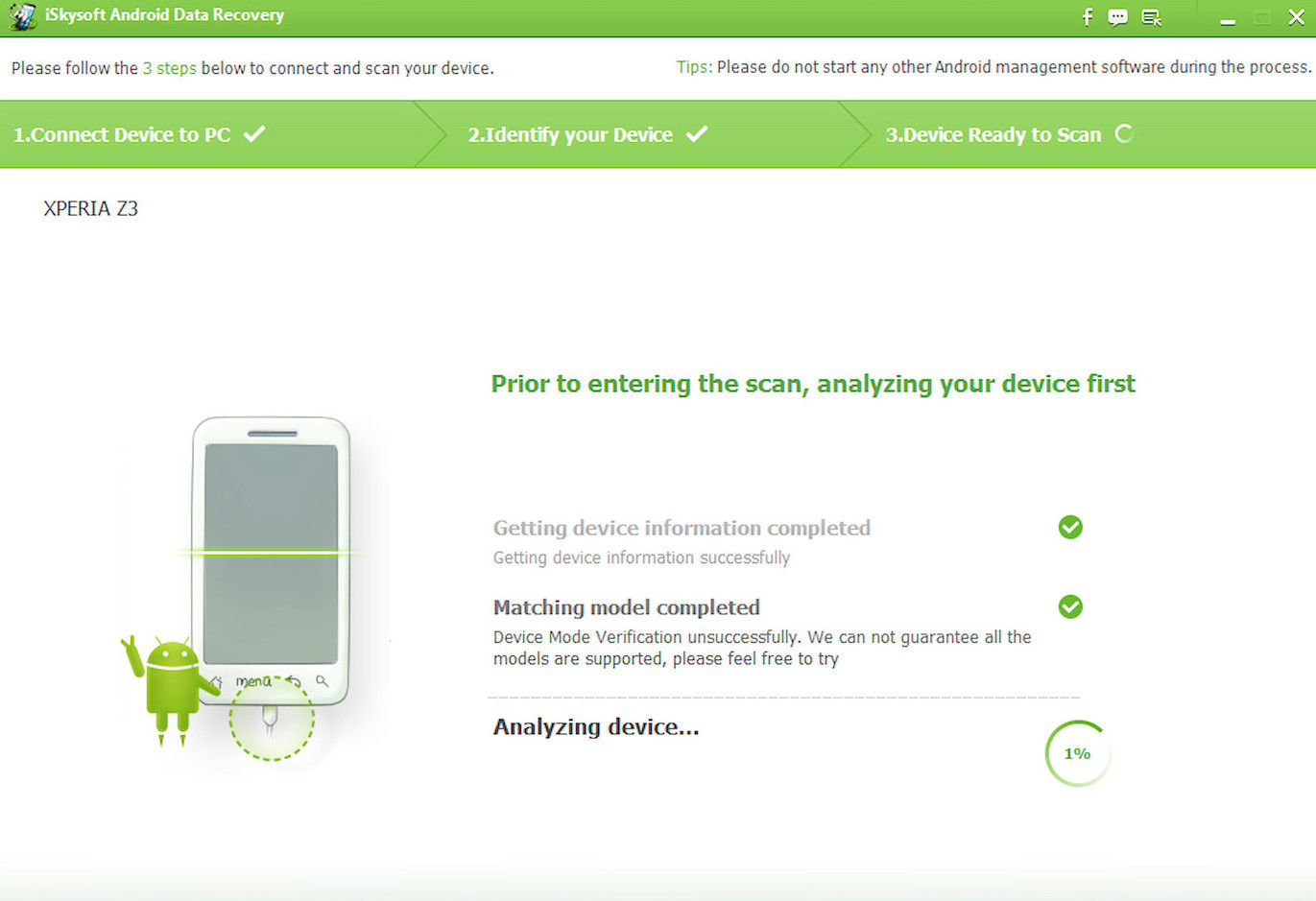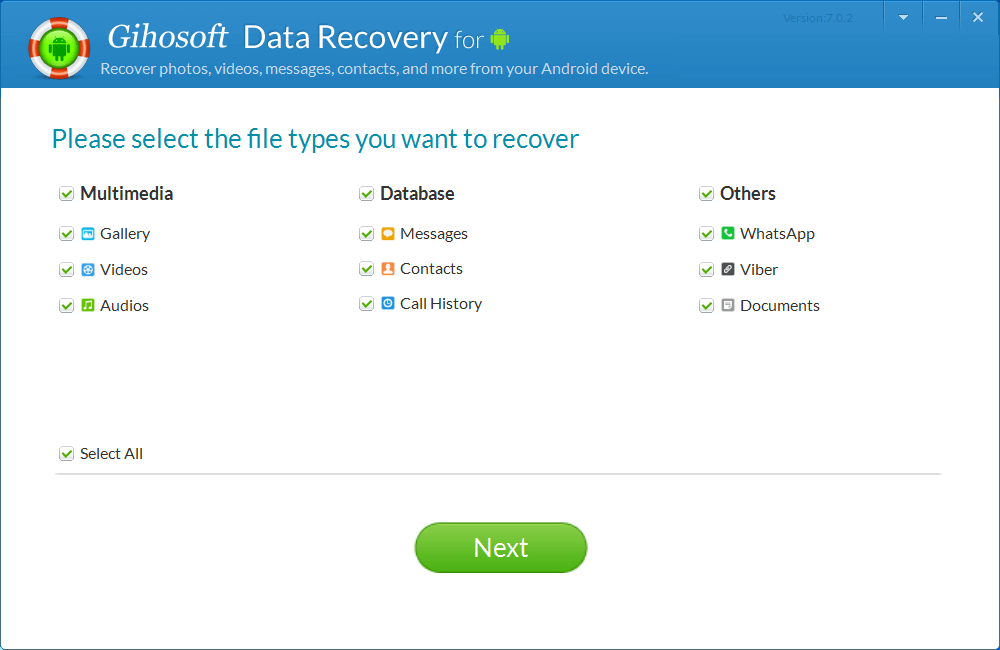
Recovering data that is deleted from the device’s internal storage.Recovering data that is deleted from SQLite databases such as SMS, chats, web history, and so on.Recovering data that is deleted from the SD card such as pictures, videos, and so on.
Android data recovery app android#
Recovering deleted data on an Android device involves three scenarios: Hence, to increase performance, operating systems just delete the metadata. Deleting the pointer and marking the space as available is an extremely fast operation compared to actually erasing all the data from the device. Hence, there is the possibility of recovering them before new data is added and occupies the space. Thus, when text messages or any other files are deleted from a device, they are just made invisible to the user, but the files are still present on the device as long as they are not overwritten by some other data. Deletion will not really erase the data but instead removes the file system metadata. All filesystems contain metadata, which maintains information about the hierarchy of files, filenames, and so on.

What gets deleted is the pointer to that data. When a user deletes any data from a device, the data is not actually erased from the device and continues to exist on it. Thus, care should be taken to prevent delivery of any new messages or data through any means of communication. To prevent such events, you can consider the option of placing the device in a Faraday bag. Also, remote wipe commands can wipe the content present on the device. For instance, an incoming SMS would automatically occupy the space, which overwrites the deleted data.

With respect to Android, it is possible to recover most of the deleted data, including SMS, pictures, application data, and so on. In spite of these situations, data recovery techniques allow a forensic investigator to access the data that has been deleted from the device. Similarly, in mobile environments, users are aware of the restore operations provided by apps and so on. For instance, on a desktop computer, people now use Shift + Del whenever they want to delete a file completely from their desktop. Wouldn’t it be of the greatest importance to know which items were deleted by them? Access to any deleted SMS messages, pictures, dialed numbers, and so on could be of critical importance as they may reveal a lot of sensitive information.įrom a normal user’s point of view, recovering data that has been deleted would usually mean referring to the operating system’s built-in solutions, such as the Recycle Bin in Windows. While it’s true that data can be recovered from these locations, due to an increase in user awareness, these options often don’t work. For example, consider the scenario where a mobile phone has been seized from a terrorist. Thus, in most criminal cases, deleted data could be crucial because it may contain information the user wanted to erase from their Android device. This is because many accused just delete data from their device hoping that the evidence will be destroyed. It is the process of retrieving deleted data from a or SD card when it cannot be accessed normally. Being able to recover data that has been deleted by a user could help solve civil or criminal cases. Data recovery overviewĭata recovery is a powerful concept within digital forensics. This book is a comprehensive guide to Android forensics, from setting up the workstation to analyzing key artifacts. This article is taken from the book Learning Android Forensics by Oleg Skulkin, Donnie Tindall, and Rohit Tamma.


Deleted data could contain highly sensitive information and thus data recovery is a crucial aspect of mobile forensics. In this tutorial, we are going to learn about data recovery techniques that enable us to view data that has been deleted from a device.


 0 kommentar(er)
0 kommentar(er)
